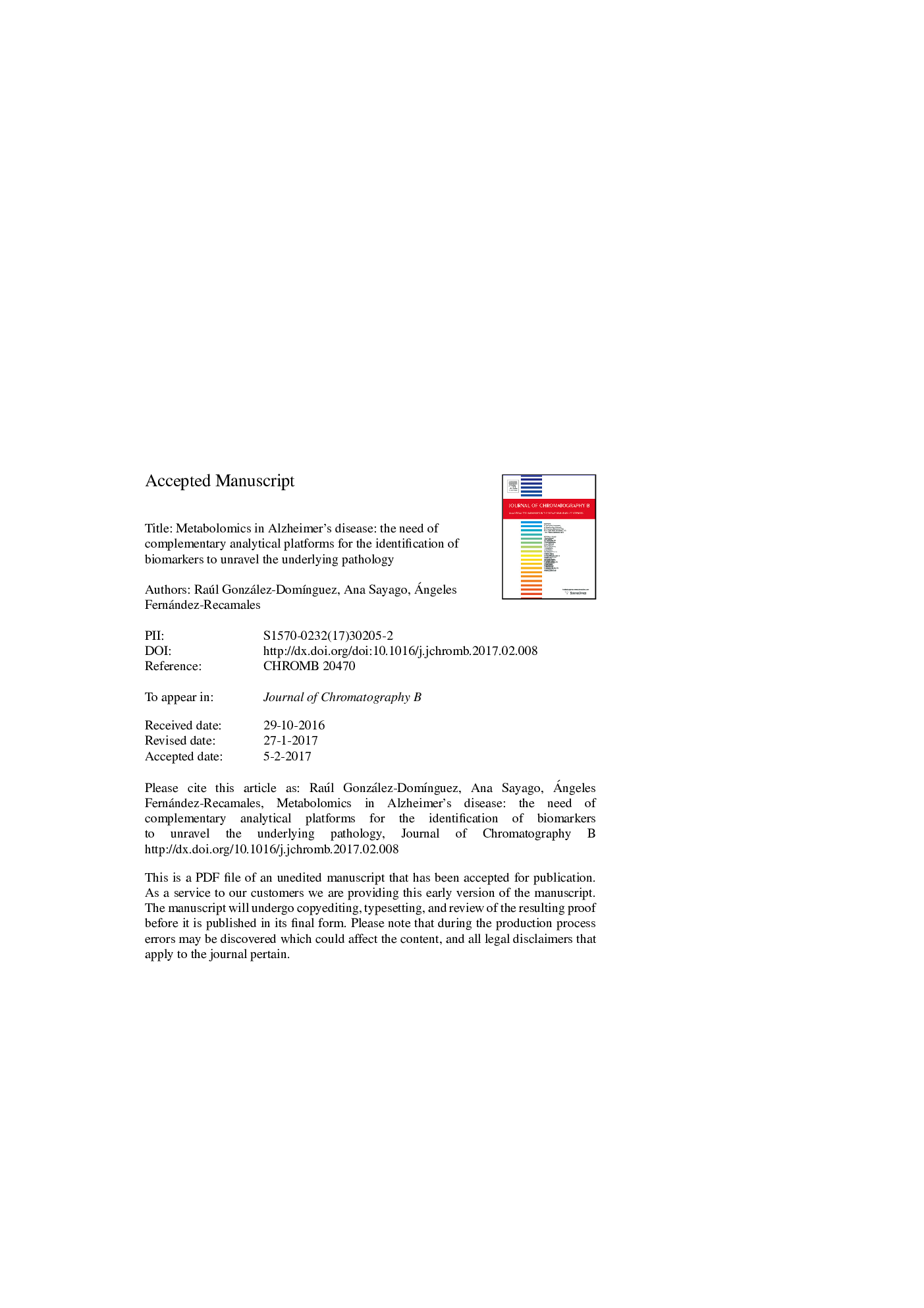| Article ID | Journal | Published Year | Pages | File Type |
|---|---|---|---|---|
| 7615776 | Journal of Chromatography B | 2017 | 57 Pages |
Abstract
Alzheimer's disease is a complex neurodegenerative disorder characterized by a multi-factorial etiology, not completely understood to date. In this context, the application of metabolomics is emerging in the last years because of its potential to monitor molecular alterations associated with disease pathogenesis and progression, as well as to discover candidate diagnostic biomarkers. However, the huge heterogeneity and dynamism of the human metabolome makes impossible the simultaneous determination of the entire set of metabolites from complex biological samples. Thus, the most common strategy to get a comprehensive overview of the organism's phenotypic expression is the combined use of complementary metabolomic platforms. In this review, we summarize the advantages and limitations of the most important analytical techniques usually employed in metabolomics, including nuclear magnetic resonance, direct infusion mass spectrometry and hyphenated approaches based on the coupling of orthogonal separation mechanisms (i.e. liquid chromatography, gas chromatography, capillary electrophoresis) with mass spectrometry. Moreover, the suitability of metabolomics to unravel the complex pathology underlying to Alzheimer's disease is also presented.
Keywords
APCITCAAPPILPLSCOAβMRSUHPLCLMWROCHMDBLBDSFAFTLDECALyso-phospholipidDIMSESIAPPSAMR1maglSAMP8PS1nuclear magnetic resonanceD-galactoseAtmospheric pressure photoionizationpresenilin 1amyloid-betaApoeapolipoprotein Emild cognitive impairmentSubjective cognitive impairmentDirect infusion mass spectrometryamyotrophic lateral sclerosisScopolaminesaturated fatty acidPolyunsaturated fatty acidPUFACapillary electrophoresisAlzheimer’s diseaseALSLewy body diseaseParkinson’s diseaseElectron impactFlow injectionNMRd-galMass spectrometrymagnetic resonance spectroscopyscireversed phasephosphatidylcholinePhospholipidmonoacylglycerol lipaseCerebrospinal fluidCSFMetabolomicswild typeMCIHuperzine AHILIClow molecular weighthuman metabolome databaseamyloid precursor proteintricarboxylic acid cycleKai-Xin-Sanliquid chromatographyUltra-high-performance liquid chromatographyhydrophilic interaction liquid chromatographyhigh-performance liquid chromatographyHPLCGas chromatographyhealthy controlreceiver operating characteristicelectrospray ionizationatmospheric pressure chemical ionization
Related Topics
Physical Sciences and Engineering
Chemistry
Analytical Chemistry
Authors
Raúl González-DomÃnguez, Ana Sayago, Ángeles Fernández-Recamales,
